History

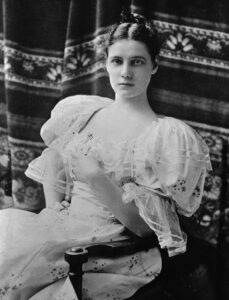 When Elizabeth Jane Cochrane was born on May 5, 1864, there were things that women couldn’t do. It was a man’s world, after all. Not much had changed by the time she was eighteen years old. She was living in Pittsburgh when the local newspaper published an article titled “What Girls are Good For” and according to the article, the answer was having babies and keeping house. These days such an article would have brought immediate outrage, protests, and the author practically strung up. Due to the times, the author would have gotten away with it, but in this case, Elizabeth Cochrane saw it and was very displeased. She was displeased enough, in fact, that she wrote an anonymous rebuttal.
When Elizabeth Jane Cochrane was born on May 5, 1864, there were things that women couldn’t do. It was a man’s world, after all. Not much had changed by the time she was eighteen years old. She was living in Pittsburgh when the local newspaper published an article titled “What Girls are Good For” and according to the article, the answer was having babies and keeping house. These days such an article would have brought immediate outrage, protests, and the author practically strung up. Due to the times, the author would have gotten away with it, but in this case, Elizabeth Cochrane saw it and was very displeased. She was displeased enough, in fact, that she wrote an anonymous rebuttal.
Strangely, the paper’s editor was quite impressed with her rebuttal. He immediately ran an ad in his paper asking the writer to identify herself. Boldly, Elizabeth contacted him, and he hired her on the spot. I’m quite sure that she was not expecting that at all. Still, in this “man’s world” she could not really let anyone know that she was the writer…and maybe that wasn’t exactly a bad thing. Going up against the men is such an argument using her own name might bring some unwanted attention. After all, things were in the very early stages of women’s rights. At that time, most women were still housewives…or schoolteachers, librarians, seamstresses, and such, if they had to work outside the home. So, it was customary at that time for female reporters to use pen names. To top it off, she wasn’t even allowed to pick out her own pen name. The editor gave her one that he took from a Stephen Foster song…Nellie Bly, and it would actually make her famous…as Nellie Bly anyway.
Bly’s passion was investigative reporting, but once again, she found herself stumbling over the whole “man’s world” concept. While she was given work, the paper usually assigned her to more “feminine” subjects…things like theater and fashion. Still, they couldn’t keep her under their thumb very well. After writing a controversial series of articles exposing the working conditions of female factory workers, and after again being relegated to reporting on society functions and women’s hobbies…at age 21 Bly left for Mexico on a dangerous and unprecedented (for a woman) assignment to report of the conditions of the working-class people there. It didn’t take long for her reporting to get her in trouble with the local authorities. Wisely, Bly fled Mexico, but didn’t give up on her story. She later published her dispatches into a popular book.
By the time Bly was 23, she had established a reputation for being a daring and provocative reporter. This drew 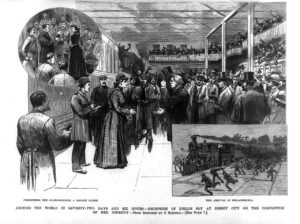 the attention of Joseph Pulitzer’s New York World, where she was hired to basically work under cover. It was the assignment that made her famous. In order to investigate the conditions inside New York’s “Women’s Lunatic Asylum,” Bly took on a fake identity (not really a new concept for someone using a pen name to write), checked into a women’s boarding house, and faked insanity. Bly was so convincing that she soon found herself committed to the asylum. I would personally find that a scary situation, but Bly was dedicated. The report she published of her ten days there was a sensation and led to important reforms in the treatment of the mentally ill.
the attention of Joseph Pulitzer’s New York World, where she was hired to basically work under cover. It was the assignment that made her famous. In order to investigate the conditions inside New York’s “Women’s Lunatic Asylum,” Bly took on a fake identity (not really a new concept for someone using a pen name to write), checked into a women’s boarding house, and faked insanity. Bly was so convincing that she soon found herself committed to the asylum. I would personally find that a scary situation, but Bly was dedicated. The report she published of her ten days there was a sensation and led to important reforms in the treatment of the mentally ill.
Nellie Bly was a woman to be remembered. When she was 24, she undertook her most sensational assignment yet: a solo trip around the world inspired by Jules Verne’s Around the World in 80 Days. Ready to go at the drop of a hat, Bly was given only two days’ notice, before she set out on November 14, 1889. She packed a travel bag with her toiletries and a change of underwear, tied her purse around her neck, and she was off. Pulitzer’s competitor, the New York Cosmopolitan, took that as a challenge and immediately sent out one of its reporters, Elizabeth Bisland, to race Bly, but traveling in the opposite direction. As Pulitzer had hoped, the stunt was a publicity bonanza. Readers gobbled up the regular reports on Bly’s journey and the paper sponsoring a contest for readers to guess the exact time of Bly’s return. The winning guess would be awarded an expense-paid trip to Europe.
Bly made her triumphant return just seventy-two days later, four and half days ahead of Bisland. She had successfully circumnavigated the globe, while traveling alone almost the entire time. It was a world record…the fastest any human had ever made the journey. Suddenly, Nellie Bly was an international celebrity. I still wonder if there was some regret that she was still using the pen name, or maybe it gave her a degree of anonymity, until people recognized her, that is.
After leading an almost insanely adventurous life, Bly decided to retire…so to speak. When she was 31 years old, Bly married industrialist Robert Seaman, a 73-year-old millionaire. With her marriage, she left behind her journalism career and her pen name and became Elizabeth Cochrane Seaman. She helped run the Seaman family business. While working as an industrialist, she patented two inventions, but she knew that business was not really her forte, and sadly, under her leadership the company went bankrupt. I’m sure that with all her life 
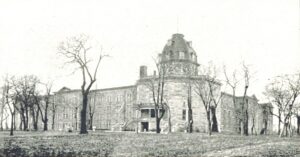 successes, that was a devastating failure for her. With the outbreak of World War I broke out, she returned to journalism, becoming one of the first women reporters to work in an active war zone. I have no doubt that Nellie Bly (Elizabeth Cochrane Seaman) could have done so many more remarkable things in her life, but sadly, her remarkable life ended on January 27, 1922, when she died of pneumonia in New York at age 57.
successes, that was a devastating failure for her. With the outbreak of World War I broke out, she returned to journalism, becoming one of the first women reporters to work in an active war zone. I have no doubt that Nellie Bly (Elizabeth Cochrane Seaman) could have done so many more remarkable things in her life, but sadly, her remarkable life ended on January 27, 1922, when she died of pneumonia in New York at age 57.

 I’m told that the Sun weighs 2,000 million million million million tons. That if course, sounds very heavy, and I suppose it could be fairly accurate. Nevertheless, for me these questions arise. How do they know the weight of the Sun? Who was it that somehow managed to go out there and weight the Sun? And where did they get a scale big enough to set the Sun on to get this very accurate sounding weight? Ok, I’m being sarcastic, but then again, these are legitimate questions. I’m told that there is a formula they use to figure the mass of a planet.
I’m told that the Sun weighs 2,000 million million million million tons. That if course, sounds very heavy, and I suppose it could be fairly accurate. Nevertheless, for me these questions arise. How do they know the weight of the Sun? Who was it that somehow managed to go out there and weight the Sun? And where did they get a scale big enough to set the Sun on to get this very accurate sounding weight? Ok, I’m being sarcastic, but then again, these are legitimate questions. I’m told that there is a formula they use to figure the mass of a planet.
First one has to calculate the mass of the Sun. There are apparently several ways to do so. One way is to use Kepler’s third law: “M = 4r³?²/T²G, where r is the distance between the Earth and the Sun, T is the time it takes for the Earth to orbit the Sun, and G is the gravitational constant. The mass of the Sun is about 2×10³? kg.” Another way is to use the mass formula: “Mass = Density x Volume. The mass of the Sun’s core is estimated to be 3.0 x 10³¹ kg, and the mass of the outer shell is estimated to be 1.1 x 10³¹ kg.” The third way is to “divide the total mass by 1.98855 times 10 to the 30th power.” From what I can see, the common methos is the Kepler’s third law. Once you have that figured, you are ready for the next step…the weight of the Sun.
That process is as complicated as, or nearly as complicated as the methods to figure the mass of the Sun. Apparently, it all has to do with the mass of the Sun, the mass of the Earth, the gravitational pull on the Earth by the Sun, and the distance between the two squared. Or more scientifically written, “The gravitational attraction between the Earth and the sun is G times the sun’s mass times the Earth’s mass, divided by the distance between the Earth and the sun squared. This attraction must be equal to the centripetal force needed to keep the earth in its (almost circular) orbit around the sun.” If that makes perfect sense to you, then you are 
 likely a better scientist or mathematician than the average person. So even if I could fully understand that process, and I don’t, I still have to ask one question, where is the proof that its true and accurate. I realize that there is no way to definitively prove the weight of the Sun, the Earth, or any other planet, and maybe this is somehow he most accurate guess possible. I don’t know, but maybe they should say that the Sun weighs approximately 2,000 million million million million tons. At least, that would stop such silly questions from people like me.
likely a better scientist or mathematician than the average person. So even if I could fully understand that process, and I don’t, I still have to ask one question, where is the proof that its true and accurate. I realize that there is no way to definitively prove the weight of the Sun, the Earth, or any other planet, and maybe this is somehow he most accurate guess possible. I don’t know, but maybe they should say that the Sun weighs approximately 2,000 million million million million tons. At least, that would stop such silly questions from people like me.
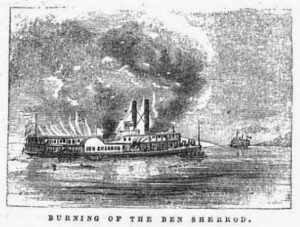 There are certain things which really should never be mixed together. One of the biggest is alcohol and the operation of any vehicle. That fact was made perfectly clear on May 8, 1837, when the steamship, Ben Sherrod was headed down the Mississippi River. The American side-wheel steamer Ben Sherrod, weighing 393 tons, was under the command of Captain Castleman, and was en route from New Orleans to Louisville carrying about 200 passengers, general freight, a large quantity of coins consigned to banks in Tennessee, and a considerable amount of wealth belonging to private individuals. As was not uncommon, the Ben Sherrod was engaged in an exciting race with the steamer Prairie. It was one o’clock in the morning, and the boat was about fourteen miles from Fort Adams, pushing her way up the Mississippi with as much speed as she could muster. Still, the Ben Sherrod was in sight of, but lagging behind the Prairie. The crew of the Ben Sherrod were determined, if possible, to pass the Prairie by, so the firemen were shoving in the pine knots, and sprinkling rosin over the coal…basically doing their best to raise more steam.
There are certain things which really should never be mixed together. One of the biggest is alcohol and the operation of any vehicle. That fact was made perfectly clear on May 8, 1837, when the steamship, Ben Sherrod was headed down the Mississippi River. The American side-wheel steamer Ben Sherrod, weighing 393 tons, was under the command of Captain Castleman, and was en route from New Orleans to Louisville carrying about 200 passengers, general freight, a large quantity of coins consigned to banks in Tennessee, and a considerable amount of wealth belonging to private individuals. As was not uncommon, the Ben Sherrod was engaged in an exciting race with the steamer Prairie. It was one o’clock in the morning, and the boat was about fourteen miles from Fort Adams, pushing her way up the Mississippi with as much speed as she could muster. Still, the Ben Sherrod was in sight of, but lagging behind the Prairie. The crew of the Ben Sherrod were determined, if possible, to pass the Prairie by, so the firemen were shoving in the pine knots, and sprinkling rosin over the coal…basically doing their best to raise more steam.
In addition to the necessary supplies needed to operate the steamship, they also had a barrel of whisky set before them, and they were drinking from it heavily and often, until they were very drunk. As they continued to load the boilers to dangerous levels, the boilers became so hot that the sixty cords of wood on board burst into flames. The Ben Sherrod was soon completely enveloped in flames, and to make matters worse, the drunken men ran away from their posts, rather than doing whatever they could to put out the fire and get the passengers to safety. The approximately 200 passengers were sound asleep, completely oblivious to the terror that awaited them.
When the deck hands discovered the fire, they too left their posts and ran for the yawl (a type of boat that can be used with sails or oars…basically a lifeboat), without warning the passengers. Captain Castleman tried to dispel the panic and confusion, by telling them the fire was extinguished. He tried to keep them from lowering of the yawl, which was what they were attempting. Then, the screams of nearly three hundred and fifty persons on board could be heard. The panic was obvious and could be heard for several miles. They were yelling, “To the shore! To the shore!” The boat made for the starboard shore, but could not reach as the wheel ropes soon burned. When they decided to let off the pent-up steam, the boat kept on up the river. The scene was simply horrific. The yawl, which had been filled with the crew, had sunk, drowning nearly all who were in it. That left the passengers with no choice but to jump from the burning ship, without even taking time to dress. There were ten ladies who all went silently overboard. Some drowned instantly, and others clung to planks. In the end, only two of the ladies were saved. While drowning was horrific enough, worse yet was the fact that several passengers were burned alive.
When the steamer, Colombus arrived on scene 30 minutes later, they found a man named Ray, from Louisville, Kentucky, clinging to a rope at the bow of the boat, where he had jumped to in an effort to escape the heat and flames. Ray’s face and arms were terribly burned while clinging to the boat, but he had to hang on and endure the agony. He lost twenty thousand dollars in coins, but he saved his life, so I’m sure the money was of little consequence to him. The steamboat Alton arrived half an hour after the Columbus, but it carelessly came in too fast, causing the drowning of many people who were floating in the water. As Alton came in, the people were too weak to get out of the way. To make matters worse, it was dark, and they were probably difficult to see in the water. A gentleman by the name of Hamilton, from Limestone County, Alabama, was floating on a barrel, with one of the ladies, when the Alton came up, washing them both under. The lady drowned, but Hamilton came up and floated down the river fifteen miles. Finally, he was rescued by the steamer Statesman. A man named McDowell stayed afloat for some time, fighting against the current, and floated only two miles down the river, finally reaching the shore, but his wife, who was floating on a plank, was drowned when the steamer Alton came rushing in. In all only two ladies out of ten who were on board were saved…one of these was the captain’s wife and the other was Mrs Smith, of New Orleans. Of the 300 people on board, it was later estimated that only 70 had escaped with their lives. The loss of Ben Sherrod was complete negligence, and that only because I can’t think of something worse to call it right now.
Many people were furious with the captain of the Prairie, for leaving a boat in flames without turning around to give aid to the victims. Another man, this one in a canoe near the scene of the disaster refused to save any who were floating in the water, unless they promised to pay him handsomely for his services…scum, if you ask me. The Ben Sherrod disaster was one of the worst calamities that ever occurred on the Mississippi river. During the burning of the Ben Sherrod eight different explosions occurred; first, barrels of whiskey, brandy, and then the boilers blew up with a huge explosion. Finally, forty barrels of gunpowder exploded. That explosion could be heard for miles. The wreckage blew apart, scattering fragments in all directions. Immediately after that 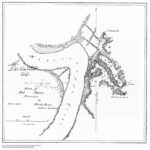 explosion, the wreck sunk out of sight just above Fort Adams, taking with it a large quantity of coins, which was on its way to the Tennessee Banks.
explosion, the wreck sunk out of sight just above Fort Adams, taking with it a large quantity of coins, which was on its way to the Tennessee Banks.
The ship remained in the river for years, but now, the remains of the Ben Sherrod are currently being recovered by a consortium of private investors. The remains of the steamship are lying upside down about one mile from Fort Adams and a little over a mile from the present channel of the Mississippi River. The ship has been buried under approximately seventy feet of sand and mud, possibly making it hard to find. So far, about 50 feet of hull timbers have been uncovered. They were in surprisingly excellent condition and the group is hoping that the cargo is there (especially all those coins), still intact, and as well preserved.
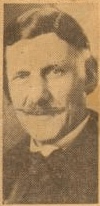
 Ian Holbourn born John Bernard Stoughton Holbourn on November 5, 1872, to Alfred Holborn and Mary Jane Stoughton. John Bernard, who later went by Ian, which is the Scottish version of John, was the eldest of their two children. His mother died when he was very young and due to his father’s ill health, the children were sent to live with their stern Aunt Augusta. As a young man he became fond of the remote Scottish island of Foula, which he succeeded in purchasing around 1900, thus becoming its laird (owner of a large, long-established Scottish estate). He was also a professor and lecturer for the University of Oxford, and a writer.
Ian Holbourn born John Bernard Stoughton Holbourn on November 5, 1872, to Alfred Holborn and Mary Jane Stoughton. John Bernard, who later went by Ian, which is the Scottish version of John, was the eldest of their two children. His mother died when he was very young and due to his father’s ill health, the children were sent to live with their stern Aunt Augusta. As a young man he became fond of the remote Scottish island of Foula, which he succeeded in purchasing around 1900, thus becoming its laird (owner of a large, long-established Scottish estate). He was also a professor and lecturer for the University of Oxford, and a writer.
Avis Gertrude Dolphin was born on August 24, 1902, in Rotherham, Yorkshire, England to John Henry Dolphin and Alice Schofield Dolphin. Avis as twelve years old when her parents booked passage for her and two nurses, Sarah Smith and Hilda Ellis, on RMS Lusitania, bound for England where Avis was to attend school while living with her grandparents. It was on that voyage that Ian Holbourn and Avis Dolphin would cross paths and their lives would be forever changed.
Ian befriended the young girl, who seemed to need a friend at the time. They talked of many things from the journey they were on to her upcoming school. She told Ian in one of their talks, that books for girls were uninteresting. Ian, an author, wrote his book “The Child of the Moat, A Story for Girls, 1557 A.D.” for Avis in 1916. The two would be friends for the rest of Ian’s life, but only because they were both destined to survive the sinking of the ship they met on. RMS Lusitania was hit by a torpedo launched from a German U-boat on May 7, 1915. That afternoon, RMS Lusitania was 11 miles off the southern coast of Ireland inside the declared war zone. The torpedo triggered in internal explosion. The damage caused her to sink in 18 minutes, killing 1,197 passengers and crew. Eventually, 289 bodies were recovered or found from the wreck. Only 761 people survived, among them, Avis Dolphin and Ian Holbourn. Ian was married to Marion Constance Archer-Shepherd, 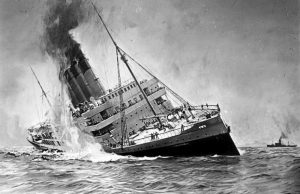
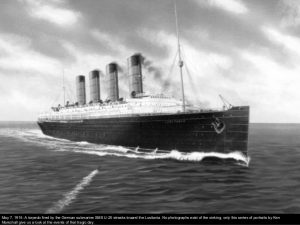 and together they had three sons. Ian died on September 15, 1935. Avis was introduced to journalist Thomas Foley during a visit to Holbourn’s home, and the two were married in 1926. Avis lived the remainder of her life in Snowdonia, Wales and died of natural causes in Meirionydd, which is a coastal and mountainous region of Wales, at the age of 93 on February 5, 1996.
and together they had three sons. Ian died on September 15, 1935. Avis was introduced to journalist Thomas Foley during a visit to Holbourn’s home, and the two were married in 1926. Avis lived the remainder of her life in Snowdonia, Wales and died of natural causes in Meirionydd, which is a coastal and mountainous region of Wales, at the age of 93 on February 5, 1996.

 World records come and world records go. Some take longer to beat than others. One record had stood for nine years. It was a record involving human endurance, and after a while, many believed that the recorded for the four-minute mile seemed like it just couldn’t be broken. so many athletes had tried and failed to break the record of 4 minutes 1.3 seconds set by Gunder Hagg of Sweden in 1945. Nevertheless, a hard to break record is a great motivator, and this one drew lots of athletes who were determined to break that record.
World records come and world records go. Some take longer to beat than others. One record had stood for nine years. It was a record involving human endurance, and after a while, many believed that the recorded for the four-minute mile seemed like it just couldn’t be broken. so many athletes had tried and failed to break the record of 4 minutes 1.3 seconds set by Gunder Hagg of Sweden in 1945. Nevertheless, a hard to break record is a great motivator, and this one drew lots of athletes who were determined to break that record.
By the early 1950s, and because so many athletes had tried and failed to run a mile in less than four minutes, people began to believe that it was a physical, and maybe even a phycological impossibility. Still, that seldom stops people from trying. In fact, in the early 1950s, several runners had dedicated themselves to being the first to cross into the three-minute zone. The goal became such a big deal that the crowds actually held their breath waiting for the time on a run to be announced. I’m sure that each failure was a colossal disappointment.
On May 6, 1954, in Oxford, England, 25-year-old medical student Roger Bannister finally succeeded in breaking track and field’s most notorious barrier…the four-minute mile. Bannister, who was born in Harrow, England, in 1929, was a top mile-runner while a student at the University of Oxford and at Saint Mary’s Hospital Medical School in London. He won British championships in the mile run, in 1951 and 1953. As he prepared himself for his first competitive race of the 1954 season, Bannister researched the mechanics of running and trained using new scientific methods he developed through his research.
Bannister came to the Iffley Road track in Oxford on May 6, 1954, for the annual match between the Amateur Athletic Association and Oxford University. Bannister was running for the Amateur Athletic Association and against his alma mater, Oxford University. The conditions that day were far from ideal. It had been windy and raining, and a considerable crosswind was still blowing across the track as the mile race was set to begin. At precisely 6pm, the starting gun was fired. Bannister had planned the race very carefully. He was aided by Chris Brasher, a former Cambridge runner who acted as a pacemaker. For the first half-mile, Brasher led the field, with Bannister a close second. Then, another runner took up the lead and reached the three-quarter-mile mark in 3 minutes .4 seconds. Bannister passed the mark at 3 minutes .7 seconds. Then, as he had planned, Bannister took the lead with about 350 yards to go and sprinted past an unofficial timekeeper at the 1,500-meter mark in 3 minutes 43 seconds, thus equaling the world’s record for that distance. Then, Bannister poured it on, throwing in all his reserves. When he broke the tape the time was 3 minutes 59.4 seconds. The announcer didn’t even get the whole time out before the crown erupted. All they needed to hear was “three minutes.” The rest didn’t matter, because the record had been broken!! Bannister’s official time was 3 minutes 59.4 seconds. It was very close to the 4-minute mark, but that didn’t matter, because .6 seconds still made it under four minutes. As soon as the first part of his score was the crown went wild!!
Bannister went on to win British and Empire championships in the mile run, and the European title in the 1,500-meter event in 1954. That was all it took for him. Going out on top, Bannister retired from athletic competition at the end of 1954, to pursue his medical career full time. He wrote a book about his experience in 1955, called The Four Minute Mile. Bannister went on to earn a medical degree from Oxford and became a neurologist. In 1955, Bannister married the Swedish artist Moyra Elver Jacobsson in Basel, Switzerland. Together they had four children…Carol Bannister (born 1957), Clive Bannister (born 1959), Thurstan Bannister (born 1960), and Charlotte Bannister (born 1963). In 1975, he was knighted by Queen Elizabeth II. He died of pneumonia at the John Radcliffe Hospital in Oxford on March 3, 2018.
As for his world record in the mile, well it did not stand long. The record continued to be lowered with 
 increasingly controlled climatic and surface conditions, more accurate timing devices, and improvements in training and running techniques. A “sub-four” mile run is still a notable time, but top international runners now routinely accomplish the feat. These days, the “mile race” has been replaced in the Olympics, because the mile is not a metric measurement. Nevertheless, it continues to be run by many top runners as a glamour event. While the sub-four race time is now a rather common time for the mile, no one else can claim the first-time record, because that belongs exclusively to Roger Bannister.
increasingly controlled climatic and surface conditions, more accurate timing devices, and improvements in training and running techniques. A “sub-four” mile run is still a notable time, but top international runners now routinely accomplish the feat. These days, the “mile race” has been replaced in the Olympics, because the mile is not a metric measurement. Nevertheless, it continues to be run by many top runners as a glamour event. While the sub-four race time is now a rather common time for the mile, no one else can claim the first-time record, because that belongs exclusively to Roger Bannister.
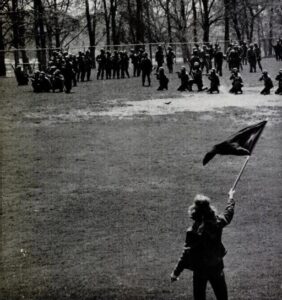 The Vietnam War was a volatile time in American history. When the war started, so did the draft. Many people protested, especially students. I suppose for them, it all felt so much closer to home, than for the older Americans. Still, the students were not alone in protesting. Many Americans agreed and protested too. The law allows for “peaceful” protesting, saying that it is “a constitutionally protected form of expression under the First Amendment in the United States. It falls under the right to free assembly, allowing every American to voice their opinions and advocate for change. However, a protest becomes a riot when one or more people within the group engage in criminal activity. This can include intentionally damaging property or causing physical harm to another person1. In other words, when a peaceful demonstration loses control and turns violent, it transitions from a protest to a riot.”
The Vietnam War was a volatile time in American history. When the war started, so did the draft. Many people protested, especially students. I suppose for them, it all felt so much closer to home, than for the older Americans. Still, the students were not alone in protesting. Many Americans agreed and protested too. The law allows for “peaceful” protesting, saying that it is “a constitutionally protected form of expression under the First Amendment in the United States. It falls under the right to free assembly, allowing every American to voice their opinions and advocate for change. However, a protest becomes a riot when one or more people within the group engage in criminal activity. This can include intentionally damaging property or causing physical harm to another person1. In other words, when a peaceful demonstration loses control and turns violent, it transitions from a protest to a riot.”
On May 2, 1970, a protest rally at Kent State University resulted in the National Guard troops being called out to suppress students who were now rioting in protest of the Vietnam War and the US invasion of Cambodia. As scattered protests continued the next day, they were dispersed by tear gas, and on May 4th class resumed at Kent State University. University officials put a ban of rallies, but it didn’t stop the rallies. By noon, some 2,000 people had assembled on the campus. The National Guard troops arrived and ordered the crowd to disperse, fired tear gas, and advanced against the students with bayonets fixed on their rifles. As is common among protesters, some refused to disperse, and even responded by throwing rocks and verbally taunting the troops.
As the situation escalated, and without firing a warning shot, 28 Guardsmen discharged more than 60 rounds 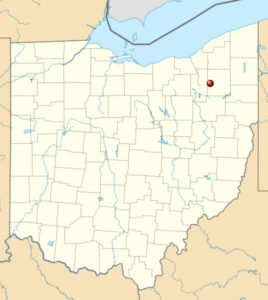 toward a group of demonstrators in a nearby parking lot, killing four and wounding nine, one of whom would be permanently paralyzed. The closest casualty was 20 yards away, and the farthest was almost 250 yards away. After a period of disbelief, shock, and attempts at first aid, angry students gathered on a nearby slope and were again ordered to move by the Guardsmen. Though they were prepared to stand and even die for their beliefs, faculty members were able to convince the group to disperse, and further bloodshed was prevented. The Kent State campus was closed for six weeks following the tragedy.
toward a group of demonstrators in a nearby parking lot, killing four and wounding nine, one of whom would be permanently paralyzed. The closest casualty was 20 yards away, and the farthest was almost 250 yards away. After a period of disbelief, shock, and attempts at first aid, angry students gathered on a nearby slope and were again ordered to move by the Guardsmen. Though they were prepared to stand and even die for their beliefs, faculty members were able to convince the group to disperse, and further bloodshed was prevented. The Kent State campus was closed for six weeks following the tragedy.
News of the shootings reverberated across the globe. It also led to protests on college campuses across the country. Just five days after the shootings, 100,000 people demonstrated in Washington, DC, both against the war and the killing of unarmed student protesters. The media put out photographs of the massacre, and the images became enduring images of the anti-war movement. A criminal investigation followed, and in 1974, at the end of the investigation, a federal court dropped all charges levied against eight Ohio National Guardsmen for their role in the Kent State students’ deaths. The decision was followed by outrage.
After the decision was made, the defendants issued a statement, “In retrospect, the tragedy of May 4, 1970, should not have occurred. The students may have believed that they were right in continuing their mass protest in response to the Cambodian invasion, even though this protest followed the posting and reading by the university of an order to ban rallies and an order to disperse. These orders have since been determined by the Sixth Circuit Court of Appeals to have been lawful.
Some of the Guardsmen on Blanket Hill, fearful and anxious from prior events, may have believed in their own 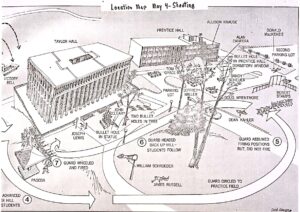 minds that their lives were in danger. Hindsight suggests that another method would have resolved the confrontation. Better ways must be found to deal with such a confrontation.
minds that their lives were in danger. Hindsight suggests that another method would have resolved the confrontation. Better ways must be found to deal with such a confrontation.
We devoutly wish that a means had been found to avoid the May 4th events culminating in the Guard shootings and the irreversible deaths and injuries. We deeply regret those events and are profoundly saddened by the deaths of four students and the wounding of nine others which resulted. We hope that the agreement to end the litigation will help to assuage the tragic memories regarding that sad day.” I agree, better ways must be found by both the protesters and the authorities.

 Over the years, I think most people have heard of the Loch Ness Monster. Most people have formed their own opinions as to what the monster, dubbed “Nessy” was. Many people have called it a hoax. Others have said that people imagined it. Still others thought it was a big fish or just a log. Whatever it was or is, the legend has endured for a long time now. In fact, the first “sighting” was reported on May 2, 1933. When the news broke, the newspaper, Inverness Courier told of a local couple who told of “an enormous animal rolling and plunging on the surface.” The story of the “monster” which was added by the Courier editor, becomes a media phenomenon, with London newspapers sending correspondents to Scotland and a circus offering a 20,000 pound sterling reward for capture of the beast.
Over the years, I think most people have heard of the Loch Ness Monster. Most people have formed their own opinions as to what the monster, dubbed “Nessy” was. Many people have called it a hoax. Others have said that people imagined it. Still others thought it was a big fish or just a log. Whatever it was or is, the legend has endured for a long time now. In fact, the first “sighting” was reported on May 2, 1933. When the news broke, the newspaper, Inverness Courier told of a local couple who told of “an enormous animal rolling and plunging on the surface.” The story of the “monster” which was added by the Courier editor, becomes a media phenomenon, with London newspapers sending correspondents to Scotland and a circus offering a 20,000 pound sterling reward for capture of the beast.
The sighting, which actually occurred in April 1933 sighting was reported in the newspaper on May 2nd. After that, interest steadily grew, especially after another couple claimed to have seen the animal on land. I don’t  recall ever having heard of the Loch Ness Monster being seen on land, but I suppose that if it is real, it could be seen on land too. What is really amazing, however, is the fact that the story, real, imagined, or faked, has endured through the years…90 of them to be exact.
recall ever having heard of the Loch Ness Monster being seen on land, but I suppose that if it is real, it could be seen on land too. What is really amazing, however, is the fact that the story, real, imagined, or faked, has endured through the years…90 of them to be exact.
Since the first sighting, amateur “investigators” have for kept an almost constant vigil, and in the 1960s several British universities launched sonar expeditions to the lake. None of the universities found anything conclusive, however, in each expedition the sonar operators detected something large, moving under the water. Still, they couldn’t identify the objects they saw. In 1975, another expedition combined sonar and underwater photography in Loch Ness. A photo resulted that, after enhancement, appeared to show what vaguely resembled the giant flipper of an aquatic animal. Nevertheless, the people who participated in the expeditions believed that there was something there, and they had no reason not to believe that the “monster” often called “Nessy” was real. So, the speculation continued.
In the 1980s and the 1990s, additional sonar expeditions were conducted. These also brought inconclusive 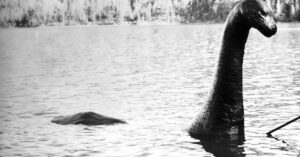
 readings. It was revealed in 1994 that the now famous 1934 photo was a complete hoax, but people still believed. It did little to dampen enthusiasm of tourists and investigators for the legendary beast of Loch Ness. The search continues to this day.
readings. It was revealed in 1994 that the now famous 1934 photo was a complete hoax, but people still believed. It did little to dampen enthusiasm of tourists and investigators for the legendary beast of Loch Ness. The search continues to this day.
 There are days when I find myself thinking more than normal about one or both of my parents, Allen and Collene Spencer, than normal, and May Day is one of the days that reminds me a lot of my mom. Mom loved the holidays, and while May Day isn’t a holiday, per se, it is a special day, and mom loved it. It was a day that she could give her girls something fun to do, while doing something fun for neighbors and friends too. Mom helped us make May baskets, fill them with candy, and told us to take them to the neighbors’ houses, hang them on the door, knock, and hide. It was the tradition of May Day, and Mom wanted us to know about it. We had so much fun making those baskets, but the real fun was in the giving of the baskets. There wasn’t a lot of candy in them. Just a few pieces, but our neighbors knew that we had left them a little bit of sweetness to brighten their day.
There are days when I find myself thinking more than normal about one or both of my parents, Allen and Collene Spencer, than normal, and May Day is one of the days that reminds me a lot of my mom. Mom loved the holidays, and while May Day isn’t a holiday, per se, it is a special day, and mom loved it. It was a day that she could give her girls something fun to do, while doing something fun for neighbors and friends too. Mom helped us make May baskets, fill them with candy, and told us to take them to the neighbors’ houses, hang them on the door, knock, and hide. It was the tradition of May Day, and Mom wanted us to know about it. We had so much fun making those baskets, but the real fun was in the giving of the baskets. There wasn’t a lot of candy in them. Just a few pieces, but our neighbors knew that we had left them a little bit of sweetness to brighten their day.

My mom was such a giving person, in so many ways. It wasn’t just May Day, or some other holiday, but really, every day. Mom gave of herself, in the kindnesses she showed, and if someone had a need, she did her best to supply that need. That was how she was raised. Her parents, George and Hattie Byer were givers, helping anyone who had a need. Their children saw that growing up, and it left a lasting impact on them too. Mom not only felt compelled to give, but she truly liked giving…from Girl Scout cookies to church to different causes she came across, Mom was a giver, and I know that she was always blessed because of it. Dad was also a giver, and they were always in agreement of these things. They taught us to be givers too, and we are all grateful for their teachings.
While May Day traditions have rather become a thing of the past, I will always remember them fondly. I think it  is sad that the May basket tradition has for the most part ceased to exist, and that makes me sad for the younger generations. Of course, with a few exceptions, most of us don’t often know our neighbors well…unless we have lived in an area for many years. Even then, people come and go, and it isn’t so easy to accept a basket of candy left on your door, unless you know for sure where it came from. It is an unfortunate side effect of the times we live in. I am thankful to have grown up in a gentler time, when May baskets could be given and received without worry about their contents, or the child giving them. Happy May Day everyone.
is sad that the May basket tradition has for the most part ceased to exist, and that makes me sad for the younger generations. Of course, with a few exceptions, most of us don’t often know our neighbors well…unless we have lived in an area for many years. Even then, people come and go, and it isn’t so easy to accept a basket of candy left on your door, unless you know for sure where it came from. It is an unfortunate side effect of the times we live in. I am thankful to have grown up in a gentler time, when May baskets could be given and received without worry about their contents, or the child giving them. Happy May Day everyone.
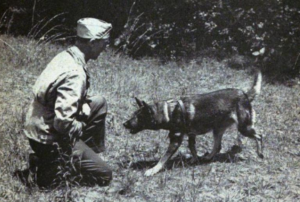 I think many people realize the usefulness of a dog as something other than a pet. Over the years, there have been seeing eye dogs, service dogs, and one I hadn’t heard of before…mercy dogs. During World War I, some 50,000 dogs were “employed” by both sides of the conflict as soldiers on both sides of the conflict as mercy dogs. You might wonder just what a mercy dogs is. While it is a rather sad one, the job the dogs had was actually had a very important job in the military. During battle, these dogs were sent out to find and help wounded men on the battlefield. They were very good at their jobs.
I think many people realize the usefulness of a dog as something other than a pet. Over the years, there have been seeing eye dogs, service dogs, and one I hadn’t heard of before…mercy dogs. During World War I, some 50,000 dogs were “employed” by both sides of the conflict as soldiers on both sides of the conflict as mercy dogs. You might wonder just what a mercy dogs is. While it is a rather sad one, the job the dogs had was actually had a very important job in the military. During battle, these dogs were sent out to find and help wounded men on the battlefield. They were very good at their jobs.
On their backs, the dogs carried medical supplies. They sought out injured soldiers. If a soldier was gravely wounded, the dogs would tear off a piece of his uniform, carry it back to camp, and help other soldiers to locate the man. Sometimes, the dogs found men who were beyond saving. In that case, they lay down next to him, so that the dying soldier didn’t have to die alone. These were true acts of mercy, and these dongs had true compassion for these men.
Mercy dogs were also known as ambulance dogs, Red Cross dogs, or casualty dogs. These dogs actually served in a paramedical role in the military…most notably during World War I, but also in World War II, and the Korean War. They have been credited with saving thousands of lives. The dogs were well trained and well suited for  trench warfare. They were often sent out after large battles, where they would seek out wounded soldiers. They were also trained to guide combat medics to soldiers who required extensive care.
trench warfare. They were often sent out after large battles, where they would seek out wounded soldiers. They were also trained to guide combat medics to soldiers who required extensive care.
The first mercy dogs were actually trained by the German army in the late 19th century. The program to train mercy dogs in 1895 begun by Jean Bungartz in Germany was described as a “novel experiment” by those who knew about it. I’m sure they didn’t think it would actually work. Nevertheless, by 1908, Italy, Austria, and France had joined Germany in training programs for mercy dogs. Germany had around 6,000 trained dogs by the beginning of World War I. Many of the trained dogs were ambulance dogs. The German army called them Sanitätshunde or medical dogs. Germany is estimated to have used a total of 30,000 dogs during the war, mainly as messengers and ambulance dogs. Amazingly, only 7,000 of those were killed. Somehow, I would have expected there to be more deaths among the dogs. It is estimated that upwards of 50,000 dogs were successfully used by all of the nations involved in the war.
When World War I started, Britain did not have a program for training military dogs. Edwin Hautenville Richardson, who was an officer in the British Army had experience working with military dogs and had advocated for the start of a military program since 1910, but his program was not taken seriously. Nevertheless, he had trained several dogs as ambulance dogs on his own. He quickly offered them to the British Army. The army did not accept his offer, for some bizarre reason, so he gave them to the British Red Cross. As a result of his advocacy, Britain created a British War Dog School with Richardson as the commander. The school eventually trained more than 200 dogs. The British War Dog School was a grand success.

It is estimated that as many as 10,000 dogs served as mercy dogs in World War I, and are credited with saving thousands of lives, including at least 2,000 in France and 4,000 wounded German soldiers. There were several dogs that were specifically honored for their work. “Captain” was credited for finding 30 soldiers in one day, and “Prusco” for finding 100 men in just one battle. Both of these were French dogs. “Prusco” was known to drag soldiers into ditches as a safe harbor while he went to summon rescuers. Sadly, many French dogs were killed in the line of duty, and the program was discontinued. I suppose they thought it was inhumane, but I’m sure the dogs knew they were doing important work.

 On April 26, 1986, an explosion in the Number 4 reactor of the Chernobyl Nuclear Power Plant, near the city of Pripyat in the north of the Ukrainian SSR, close to the border with the Byelorussian SSR, in the Soviet Union. So began what is considered the worst nuclear disaster in history. The Chernobyl disaster is one of only two nuclear energy accidents that was rated at seven, which is maximum severity on the International Nuclear Event Scale. The other one was the 2011 Fukushima nuclear accident in Japan, which of course, hadn’t happened yet. The cost of this disaster would be an enormous cost an estimated 18 billion roubles, which is roughly US$83 billion today. The initial emergency response and subsequent mitigation efforts involved more than 500,000 personnel. With all that, it is considered the worst nuclear disaster in history. Strange how the 4th worst disaster can also be considered the worst. I suppose it is in the cost to mitigate the damage and loss of life.
On April 26, 1986, an explosion in the Number 4 reactor of the Chernobyl Nuclear Power Plant, near the city of Pripyat in the north of the Ukrainian SSR, close to the border with the Byelorussian SSR, in the Soviet Union. So began what is considered the worst nuclear disaster in history. The Chernobyl disaster is one of only two nuclear energy accidents that was rated at seven, which is maximum severity on the International Nuclear Event Scale. The other one was the 2011 Fukushima nuclear accident in Japan, which of course, hadn’t happened yet. The cost of this disaster would be an enormous cost an estimated 18 billion roubles, which is roughly US$83 billion today. The initial emergency response and subsequent mitigation efforts involved more than 500,000 personnel. With all that, it is considered the worst nuclear disaster in history. Strange how the 4th worst disaster can also be considered the worst. I suppose it is in the cost to mitigate the damage and loss of life.
Volodymyr Pavlovych Pravyk was a Soviet firefighter, was born in the town of Chernobyl on June 13, 1962. His mother, Natalia Ivanova Pravyk, was a nurse, and his father, Pavel Opanasovich Pravyk, a construction worker. Pravyk took charge of the initial efforts to extinguish fires following the Chernobyl Disaster. I don’t know what measures were taken to protect the workers from radiation exposure, but I would expect that it was little to no protection. I would also expect that the equipment they did have was not what it needed to be to save them from radiation poisoning. After the event was over, Pravyk was hospitalized with acute radiation syndrome. For him, any improvements in protection would come too late. He died on May 11, 1986, just sixteen days later. Even though they could not save him, they knew that his actions were heroic. Pravyk was posthumously awarded the Hero of the Soviet Union and the Order of Lenin by the Soviet Union, and later the Ukrainian Star For Courage (later known as the Order for Courage) in recognition of his efforts.
It was later determined that a routine test at the power plant had gone horribly wrong, causing two massive 
 explosions that blew the 1,000-ton roof off one of the plant’s reactors. The explosions released 400 times more radiation than the atomic bomb dropped on Hiroshima. The disaster killed two workers in the initial explosions. Within months, at least 28 more would be dead by acute radiation exposure. Thousands of people would eventually show signs of health effects from the fallout, including cancer.
explosions that blew the 1,000-ton roof off one of the plant’s reactors. The explosions released 400 times more radiation than the atomic bomb dropped on Hiroshima. The disaster killed two workers in the initial explosions. Within months, at least 28 more would be dead by acute radiation exposure. Thousands of people would eventually show signs of health effects from the fallout, including cancer.

